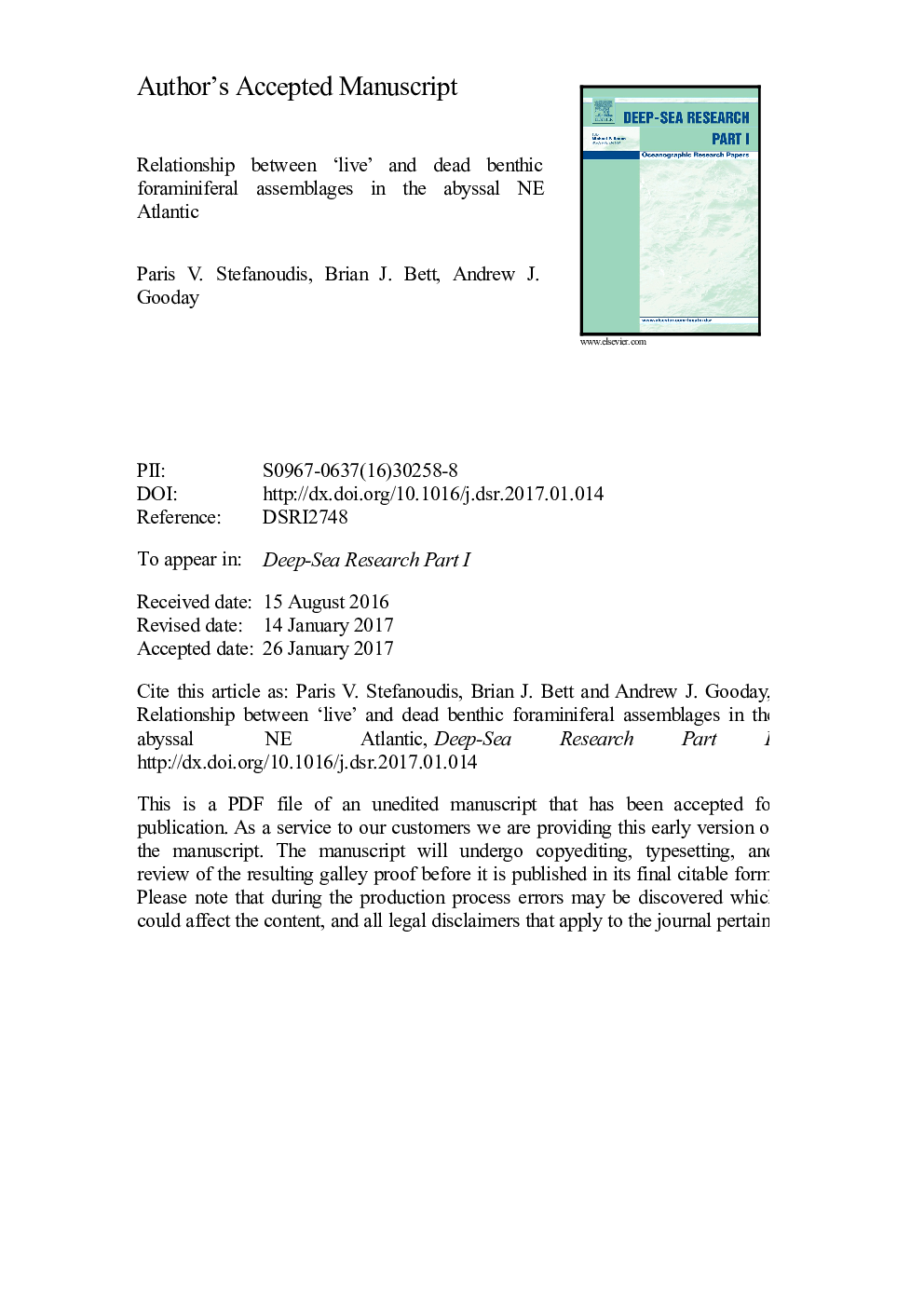| Article ID | Journal | Published Year | Pages | File Type |
|---|---|---|---|---|
| 5764636 | Deep Sea Research Part I: Oceanographic Research Papers | 2017 | 35 Pages |
Abstract
Dead foraminiferal assemblages within the sediment mixed layer provide an integrated, time-averaged view of the foraminiferal fauna, while the relationship between dead and live assemblages reflects the population dynamics of different species together with taphonomic processes operating over the last few hundred years. Here, we analysed four samples for 'live' (Rose-Bengal-stained) and dead benthic foraminifera (0-1 cm sediment layer, >150 µm) from four sites in the area of the Porcupine Abyssal Plain Sustained Observatory (PAP-SO; NE Atlantic, 4850 m water depth). Two sites were located on abyssal hills and two on the adjacent abyssal plain. Our results indicate that the transition from live to dead benthic foraminiferal assemblages involved a dramatic loss of delicate agglutinated and organic-walled tests (e.g. Lagenammina, Nodellum, Reophax) with poor preservation potential, and to a lesser extent that of some relatively fragile calcareous tests (mostly miliolids), possibly a result of dissolution. Other processes, such as the transport of tests by bottom currents and predation, are unlikely to have substantially altered the composition of dead faunas. Positive live to dead ratios suggest that some species (notably Epistominella exigua and Bolivina spathulata) may have responded to recent phytodetritus input. Although the composition of live assemblages seemed to be influenced by seafloor topography (abyssal hills vs. plain), no such relation was found for dead assemblages. We suggest that PAP-SO fossil assemblages are likely to be comparable across topographically contrasting sites, and dominated by calcareous and some robust agglutinated forms with calcitic cement (e.g. Eggerella).
Related Topics
Physical Sciences and Engineering
Earth and Planetary Sciences
Geology
Authors
Paris V. Stefanoudis, Brian J. Bett, Andrew J. Gooday,
